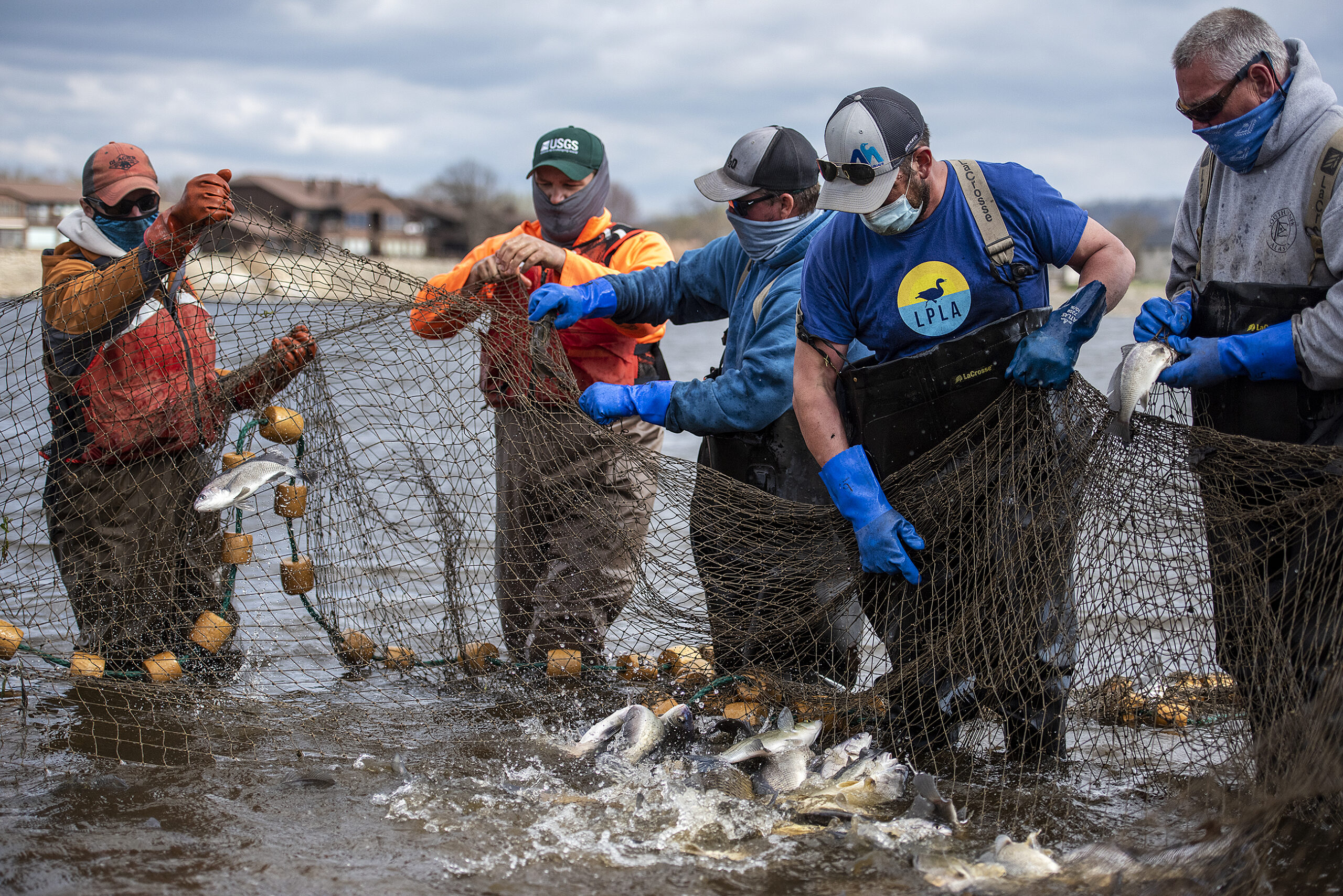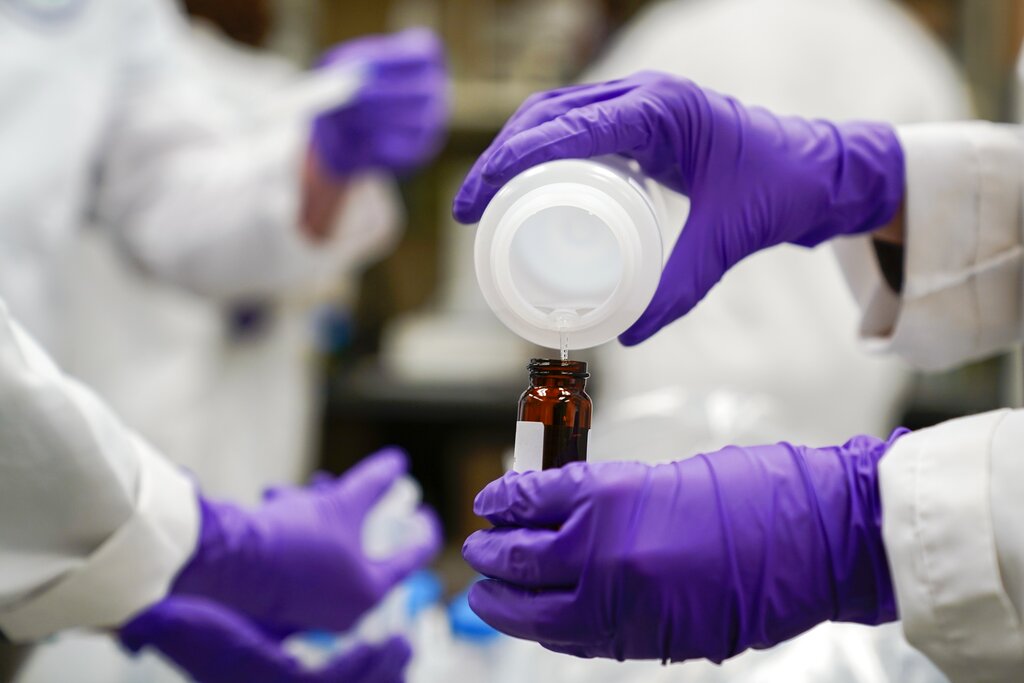A new study from the UW School of Medicine and Public Health finds that PFAS, PFOA and other so-called “forever chemicals” are in the blood of most Wisconsin residents — and that two foods in particular are linked with higher levels of the chemicals in a person’s blood.
The research team from the UW School of Medicine and Public Health analyzed blood samples from more than 600 Wisconsin adults from 2014 to 2016 to see if and how these chemicals are in Wisconsin residents. The study found that more than 96 percent of Wisconsin adults sampled have detectable PFAS compounds in their blood.
Older, non-Hispanic white adult males are more likely to have higher levels of PFAS than other groups. Individuals with a higher annual household income were more likely to have higher levels as well.
News with a little more humanity
WPR’s “Wisconsin Today” newsletter keeps you connected to the state you love without feeling overwhelmed. No paywall. No agenda. No corporate filter.
The analysis also found a relationship between higher PFAS levels and the consumption of two different foods: microwaved popcorn and locally caught fish.
But Amy Shultz, an epidemiology senior data scientist and lead on this project, told WPR’s “Wisconsin Today” that this doesn’t mean definitive claims can be made about PFAS risk with certain foods.
“Because the data we used was not specifically asked in such a way to get at all potential sources of PFAS, there’s potential associations we weren’t able to uncover,” Shultz said. “And more research is needed to really understand the associations.”
Schultz explained what this research does and doesn’t reveal about forever chemicals in our food.
The following was edited for clarity and brevity.
Rob Ferrett: Why is it important to figure out if PFAS chemicals are winding up in Wisconsin residents?
Amy Shultz: It’s important for us to understand a baseline of prevalence of PFAS exposure. How many people have detectable levels? What’s the dose of exposure? How high are those levels?
It enables us to continue to do research. It lets us know: are there subpopulations that may be more exposed that we previously were unaware of, outside of known contamination sites or areas of concern? And then it allows us to compare prevalence of PFAS exposure in a general Wisconsin adult sample to a national population. Are Wisconsinites more or less exposed to PFAS?
RF: Your research finds people who eat locally caught fish were more likely to have higher serum PFAS within your study. But you’re saying people should not be alarmed about eating locally caught fish at this point. Why is that?
AS: You cannot be alarmed for several reasons.
One is that the information we had on eating locally caught fish wasn’t very detailed. So we weren’t able to look at how many locally caught fish an individual ate per year, and if that’s related to increased dose of PFAS exposure. We didn’t look at the type of fish or specific water bodies or water waste.
Also, I should note that it’s very possible those in our study sample that eat locally caught fish are also more likely to be exposed to PFAS via another source that we weren’t able to look at. For example, they’d maybe be more likely to also eat store-bought fish, and maybe they’re getting PFAS from that source and that’s explaining the association we’re seeing.
Another important point is that the difference in overall PFAS we found among those who eat locally caught fish and those who don’t may not be clinically meaningful. Meaning having a PFAS level of 5.6 parts per billion on average, compared to 4.2, might not mean that you have any increased risk of an adverse health effect. So that requires additional research as well.
RF: This study was performed using samples originally taken for another purpose that you were able to analyze for your research. What would be your ideal design for future studies that could drill deeper into these questions?
AS: I think there are several ideal next steps.
One would be to dive into the trend seen in this study by gathering more specific and detailed sources of exposure information. So actually measuring PFAS and drinking water from these participants, gathering more detailed dietary items, occupational exposure, consumer products. We didn’t ask about non-stick cookware use or anything like that.
Also, with some of these associations, there’s clear underlying factors. Higher household income itself does not give you PFAS, right? So examining what are the underlying factors or behaviors among those in our study sample with higher incomes that might be driving that also this is a first look and provides a baseline.
Now we can track changes in PFAS and the population over time. So in the next 5, 10, 15 years, do we see decreases in PFAS among our study sample? Specifically after the Environmental Protection Agency in 2024 has ruled to regulate PFAS in several ways, such as drinking water standards and manufacturing and cleanup sites. And then expanding the research to include more adults, so a larger study sample, more adults from diverse racial and ethnic communities in Wisconsin and more geographical regions in the state.







